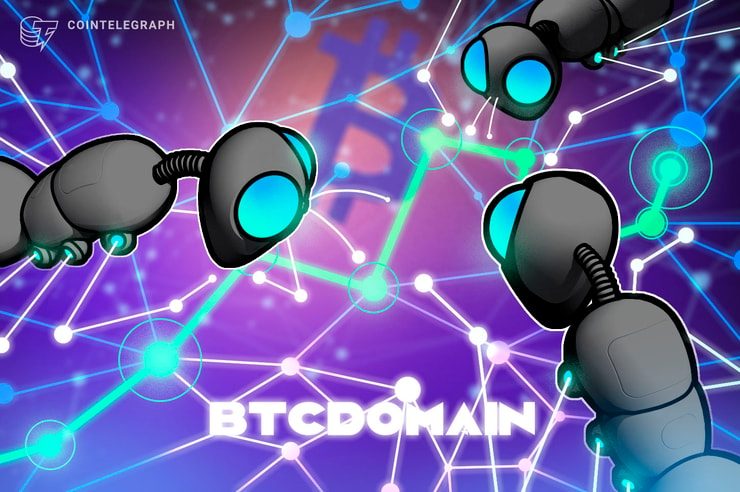Back to the 1970s? Fintech lenders are preparing for the future

Lenders are bracing for a difficult year ahead as pandemic tailwinds end while high inflation and a host of related economic headwinds begin to accumulate. But some also see the opportunity.

Image source: Pexels/Andrea Piacquadio
While most agree they do not want a repeat of the worst of the 1970s – winter blackouts, strikes, spiraling inflation, bankruptcies, unemployment and weak growth – much of it already appears to be happening or is expected to happen in the coming months.
However, for nimble digital lenders, especially those ready to respond quickly to new data sources, this could be another period of accelerated growth as a result of gains made during the pandemic.
Lending may soon become a much more polarized market with low-risk businesses and low-risk consumers still having ample access to credit, but higher-risk borrowers stalling.
The former will therefore be treated more heavily by a larger group of lenders. The latter, the opposite. Lenders, meanwhile, will require a variety of new data sources to accurately price both groups. Fintech-enabled firms may well be best suited to these conditions.
Gathering storm clouds
In normal times, lenders are able to predict their lending over several years based on the probability of a number of outcomes. But now that time horizon has shrunk.
“Now things are changing quite quickly. And this presents challenges for lenders. But at the same time, I think it also gives increased chances, not just taking the easy route of saying I’m going to stop lending to consumers just to play it safe ,” Arie Wilder, CEO of Auxmoney, one of the largest digital consumer lenders in Europe, told AltFi in a webinar last week,
“At the same time, if you’re fast, if you have a test mentality and if you’re very analytical, and also embrace the power of additional data … then there’s also still a time to gain market share and support these consumers in a responsible way with capital and while doing good business,” said Wilder.
While this scenario makes risks harder to calculate and therefore potentially more catastrophic, prompting some lenders to retreat from the market until the storm clouds dissipate, Wilder says fintech lenders could have the advantage of taking new market share from incumbents.
“It’s just more uncertain. You have to think more in scenarios. You must be quick and very analytical. And so I think it’s a time that can be maneuvered through successfully, he said.
Chris Keane at GDS Link, which provides credit risk tools to lenders, says many borrowers – both businesses and consumers – are seeing the end of the pandemic’s distorting effect on their financial profiles.
“There’s a whole group of consumers who are really feeling squeezed through the rising cost of living and businesses who have had their balance sheets flattered through Covid support schemes,” Keane said.
Katrin Herrling, CEO of Funding Xchange, says we’re starting to see the failure rate for a group of small and medium-sized businesses increase after the “normal” signs you want to look for to understand the risk profiles of businesses become less muted.
This impact ends, with the government’s cash and the effectiveness of the protection that it extends until business ends.
“We see — if you just look at the last two years as a lender — you may well be left with an impression of operating in a very, very benign environment is the very low standards. And even very low crime,” Herrling said .
“These risk signals are incredibly misleading … we can already see this in very early warning signs, that we’re going back to a much more conventional impact of risk on business behavior,” Herrling said.
The removal of support from government-backed Covid business loan schemes and the liquidation of consumer savings buffers built up during the pandemic mean we are entering a new era of lending.
The next twelve months as a result will make it more difficult for lenders to assess SME borrowers, says Herrling.
“What we’re seeing is that we’re coming out of a period of huge upheaval that didn’t pan out like a normal recession because of government interventions that were very effective. We have seen two years where portfolios for lenders have actually performed incredibly well, Herrling said.
“This is the effect of £87 billion or so of funding being made available to UK businesses through loan schemes, and then further support through other schemes that the government has in place as well,” she added.
Wilder says the same can be used for consumers.
“We see that the economic recovery after the corona pandemic is now slowing down and this is having serious financial consequences for consumers. Mostly inflation and rising energy costs that certainly put pressure on affordability to customers, Wilder said.
However, he adds that the overall labor market points towards a more robust environment in Germany, which gives some hope.
“If you think about the consumer credit sector in Germany, the situation causes much more uncertainty than when you compare to five years ago,” Wilder said.
Maintain profitability
A central question for lenders is whether they should withdraw from lending in such uncertain times. Lenders need to know which customers are “good” risks and which customers are now most vulnerable when a full withdrawal is not an option.
Wilder says Auxmoney is “not backing down completely.” But taking measures to lend more responsibly and protect investors’ returns by ensuring that default rates do not rise too sharply.
“So we’ve definitely looked very closely at the individual segments and also become more restrictive in certain segments where we don’t think it’s a good idea to provide additional credit at this time,” Wilder said.
Many lenders are in a similar boat, and do not want to withdraw from lending after two and a half years of the pandemic.
“We have seen the decimated portfolios of some of the larger digital lenders need to be rebuilt … by those who have not been able to use the public schemes to maintain the size of their portfolios,” Herrling said.
This is because the size of a lender’s overall portfolio of loans drives income. A complete withdrawal means going out of business.
“It is an economic reality that having to put in funding is also part of surviving as a lender. I think the way this plays out is everyone is trying to find good businesses to lend to and trying to find lending models that protect them, Herrling said.
However, she says that it has become much more difficult to get access to wholesale financing, and that this limits access to financing in the market. Due to a number of factors, this target segment of “safer” corporate lending is becoming smaller.
For households, borrowing is increasing. British consumers doubled their borrowing – mostly via credit card – in June compared with May, up from £900m to £1.8bn, according to the Bank of England. Second mortgages also appear to be back in vogue, rising 43 percent year-on-year in May, according to industry data, as households look to debt to meet their bloated needs.
For lenders, a long-awaited higher interest rate environment comes at a time when demand for their loans is soaring, but this is marred by one of the toughest economic outlooks in half a century.
Whichever way you play it, it’s amplified. business risk. Withdrawing from lending means loss of income. Lending responsibility also means loss. However, some also believe it could be a big opportunity for fintech lenders to carve out a stronger market position in the medium term despite it being their first experience of an economic downturn.
Sign up for our newsletters


























